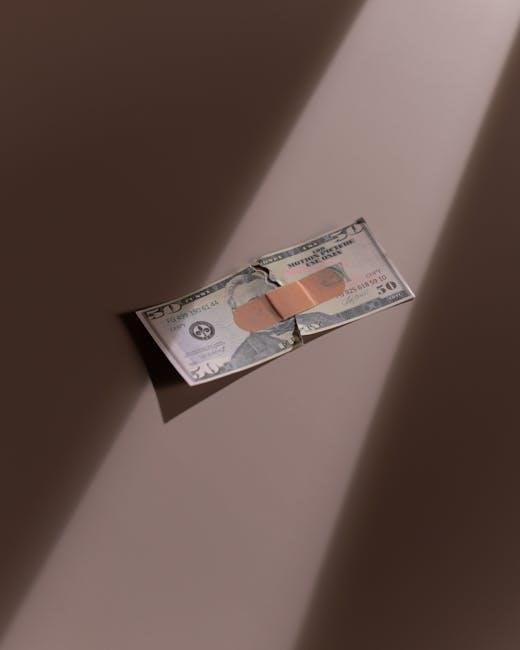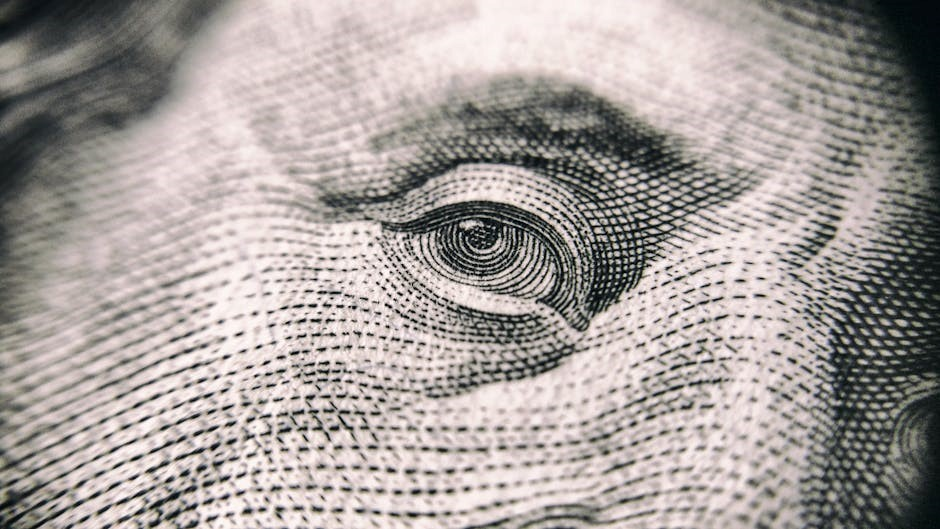
currier ives lithographs value guide
Currier & Ives lithographs are iconic 19th-century prints known for their hand-colored beauty and historical significance, offering a glimpse into America’s past while remaining highly collectible and valuable.

History of Currier & Ives
Founded by Nathaniel Currier in 1834 and later joined by James Ives in 1857, Currier & Ives became renowned for producing decorative, affordable lithographs of American life and landscapes.
2.1. The Partnership Between Nathaniel Currier and James Ives
Nathaniel Currier and James Ives formed a successful partnership in 1857, combining their expertise in lithography and business. Currier, an experienced lithographer, focused on artistic production, while Ives managed the financial and marketing aspects. Their collaboration led to the creation of thousands of decorative lithographs, which were both affordable and appealing to the masses. The partnership flourished, making Currier & Ives a household name and a dominant force in 19th-century American art. Their joint efforts not only popularized lithography but also set the foundation for the enduring value and collectibility of their works, which continue to be celebrated for their historical and artistic significance.
2.2. The Lithographic Process Used by Currier & Ives
Currier & Ives employed a meticulous lithographic process that involved hand-drawing images onto limestone plates. Artists would sketch designs in reverse onto the stone’s surface, which were then inked and printed. Each color required a separate stone, making the process labor-intensive. The prints were hand-colored by skilled artisans, enhancing their vibrancy and appeal. This method ensured high-quality, detailed reproductions that were both durable and visually striking. The combination of traditional lithography and hand-coloring contributed to the distinctive charm of their prints, making them highly sought after by collectors and significantly influencing their market value over time.

Factors Affecting the Value of Currier & Ives Lithographs
Value depends on age, rarity, condition, demand, and size, with rarer, well-preserved pieces commanding higher prices due to their historical and artistic significance.
3.1. Age and Rarity of the Lithograph
The age and rarity of a Currier & Ives lithograph significantly influence its value. Prints from earlier periods, such as the 1860s, are generally more valuable due to their historical significance. Rarity is determined by the number of surviving copies, with some lithographs existing in only a few examples. For instance, “The Old Grist Mill” (1864) and “The Last War-Whoop!” are highly sought after due to their limited availability. The age of the lithograph also reflects its condition, as older prints may show signs of wear. Rare and well-preserved pieces, such as “Darktown Pair De Tug of War!” and “American Farm Yard,” command higher prices at auction. Provenance and historical context further enhance their value.
3.2. Condition and Preservation of the Print
The condition and preservation of a Currier & Ives lithograph play a critical role in determining its value. Prints that are in excellent condition, with vivid hand coloring and minimal fading, are highly sought after by collectors. Common issues such as tears, staining, or foxing can significantly lower the value. Proper preservation, such as framing with acid-free materials and avoiding exposure to direct sunlight, helps maintain the print’s integrity. Original hand-colored lithographs in pristine condition are particularly valuable, while reproductions or prints with restoration may be less desirable. The state of preservation reflects the print’s historical authenticity and aesthetic appeal, directly influencing its market value and desirability among collectors and investors.
3.3. Demand and Popularity in the Market
The demand for Currier & Ives lithographs remains strong, driven by their historical significance and artistic appeal. Collectors and enthusiasts seek these prints for their nostalgic depiction of 19th-century American life. Popular themes, such as rural landscapes, hunting scenes, and winter sports, consistently attract high interest. Limited supply and the rarity of certain prints contribute to their desirability. Auction records show that well-preserved, original lithographs often fetch premium prices, reflecting their enduring popularity. The market also sees demand for reproductions, though originals hold greater value. This sustained interest underscores the timeless appeal of Currier & Ives lithographs, making them a sought-after collectible in the art and antiquities market.
3.4. Size and Format of the Lithograph

The size and format of Currier & Ives lithographs significantly influence their value. Larger prints, such as the “large-folio” size (approximately 27×36 inches), are highly sought after due to their rarity and dramatic visual impact. Smaller formats, like the “small-folio” size (around 18×22 inches), are more common and generally less valuable. The prints were typically issued in standard sizes, with hand-colored versions commanding higher prices than uncolored ones. The format also reflects their intended use, such as decorative wall art orIllustrations for publication. Collectors often prefer prints in their original format, as alterations or resizing can diminish their authenticity and value. Size and format are critical factors in determining the lithograph’s collectibility and market worth.

How to Determine the Authenticity of Currier & Ives Lithographs
Authentic Currier & Ives lithographs can be verified through professional appraisal, examining signatures, and ensuring the print originates from the original lithographic stones used by the firm.
4.1. Key Characteristics and Signatures
Currier & Ives lithographs are identified by their hand-colored detail, historical themes, and distinctive signatures. Many prints bear the imprint “Currier & Ives” or “N. Currier” in the stone or printed text. Key characteristics include vibrant colors, intricate lithographic details, and subjects like landscapes, rural life, and historical events. Sizes vary, with small folios (7×9 in) to large folios (20×27 in). Signatures may appear in the lower corners or within the image. Authentic prints often feature the phrase “Published by Currier & Ives” or “Entered according to Act of Congress.” Provenance and condition play a role in verifying authenticity, as does the presence of original hand coloring and lithographic transfer marks.
4.2. Methods for Verifying Originality
Verifying the originality of Currier & Ives lithographs involves examining paper quality, inking, and hand coloring. Experts look for the characteristic texture of 19th-century paper and the presence of a visible plate mark. The lithographic process used by Currier & Ives ensures that original prints have a distinct, sharp image with fine details. Hand coloring should appear even and consistent, without signs of modern enhancement. Consulting provenance and comparing the print to known examples in catalogs or auctions can also confirm authenticity. Professional appraisals and laboratory testing are recommended to detect reproductions or alterations. Additionally, checking for the publisher’s imprint and copyright information is crucial in verifying the print’s originality and value.

A Guide to Pricing and Valuation
Currier & Ives lithographs vary in price from a few hundred to several thousand dollars, depending on rarity, condition, and historical significance, reflecting their enduring collectible appeal.
5.1. Price Ranges for Common and Rare Lithographs
Currier & Ives lithographs vary significantly in price, with common examples ranging from a few hundred to several thousand dollars. Rare and highly sought-after pieces, such as “The Old Grist Mill” or “The Last War-Whoop,” can fetch between $2,000 and $8,500. Hand-colored large-folio prints, like “American Farm Yard ─ Morning,” often fall within the $2,000 to $3,000 range. Smaller, less intricate works may be priced between $500 and $1,500. Factors such as condition, rarity, and historical significance heavily influence valuation, with pristine examples commanding premium prices. Collectors should consult auction records and appraisals to determine accurate market values for specific pieces.
5.2. Notable Sales and Auction Records
Notable sales of Currier & Ives lithographs highlight their enduring value. A rare large-folio piece, “The Old Grist Mill,” sold at auction for $2,500, while “The Last War-Whoop” fetched $8,500. Another standout, “Darktown Pair,” was purchased for $375, showcasing the range of prices. These sales, often through reputable auction houses like The Old Print Shop in New York, demonstrate the market’s strong interest in these lithographs. Such records provide valuable insights for collectors and investors, helping to establish benchmarks for future appraisals and purchases. Tracking these notable sales is essential for understanding the evolving market dynamics of Currier & Ives lithographs.

Investing in Currier & Ives Lithographs

Currier & Ives lithographs offer a unique investment opportunity, with values ranging from $175 to $30,000, depending on rarity and condition, making them a potentially lucrative collectible asset.
6.1. Potential Return on Investment
Currier & Ives lithographs can offer significant returns for investors, particularly for rare and well-preserved pieces. While common prints may yield modest gains, rare lithographs, such as The Old Grist Mill or Darktown Pair, can appreciate substantially. Prices range from $175 for reproductions to $30,000 for rare originals, indicating strong potential for growth. Factors like condition, age, and demand play crucial roles in determining ROI. Investors should focus on acquiring high-quality, authenticated pieces, as these tend to perform better in the market. Consulting experts and staying informed about market trends is essential for maximizing returns in this niche collectibles market.
6.2. Market Trends and Future Prospects
The market for Currier & Ives lithographs remains robust, with growing interest in 19th-century American art; Recent auction records show increasing demand for rare and well-preserved pieces, suggesting upward trends in value. Notable sales, such as The Old Grist Mill fetching between $2,000 and $3,000, highlight the market’s strength. Additionally, the popularity of historical and decorative art continues to rise, driving interest in these lithographs; As collectors and institutions seek rare examples, future prospects for appreciation are promising, especially for high-quality, authenticated prints. Staying informed about market activity and trends will be crucial for those looking to invest or collect these iconic works.

Where to Buy and Sell Currier & Ives Lithographs
Currier & Ives lithographs can be purchased through reputable auction houses like Christie’s and Sotheby’s, as well as specialized dealers such as The Old Print Shop in New York City. Online marketplaces like eBay also offer a platform for buying and selling these prints. Additionally, private sales through galleries and antique shops provide opportunities for both collectors and sellers to engage in transactions.
7.1. Reputable Auction Houses and Dealers
Reputable auction houses like Christie’s and Sotheby’s frequently feature Currier & Ives lithographs in their sales, offering authenticated pieces with detailed provenance. Dealers such as The Old Print Shop in New York City specialize in 19th-century prints, ensuring high-quality and genuine works. These establishments often provide appraisals and certificates of authenticity, which are crucial for collectors. Auction houses also publish catalogs with estimated values, helping buyers and sellers understand market trends. Dealers may offer private sales, allowing for personalized transactions. Both auction houses and dealers play a vital role in maintaining the integrity and value of Currier & Ives lithographs in the market.
7.2. Online Marketplaces and Private Sales
Online marketplaces such as eBay, Etsy, and specialized art platforms offer a wide range of Currier & Ives lithographs for sale. These platforms provide accessibility and convenience, allowing collectors to browse and purchase from anywhere. Private sales through galleries, dealers, or collector networks are also common, often offering rare and high-value pieces. When purchasing online, it’s crucial to verify the seller’s reputation and ensure the lithograph’s authenticity. Many online sellers provide detailed descriptions, provenance, and certificates of authenticity to build trust. Additionally, collector forums and communities can connect buyers with trusted sources, making online marketplaces and private sales a viable option for acquiring Currier & Ives lithographs.
![]()
Preserving and Maintaining the Value of Lithographs
Proper framing, storage, and handling are essential to maintain the value of Currier & Ives lithographs. Professional conservation ensures their condition and longevity for future generations.
8.1. Conservation and Framing Best Practices
Proper conservation and framing are crucial to preserving the value of Currier & Ives lithographs. Use acid-free materials and UV-protective glass to prevent fading and deterioration. Handle prints with clean, dry gloves to avoid oils from skin. Store them in a cool, dry environment away from direct sunlight and moisture. Professional framing ensures longevity and maintains condition. Regular inspections by conservators can detect and address potential damage early. Avoid touching the surface of the lithograph, as it can cause irreversible damage. For optimal preservation, consider archival-quality mats and frames that meet museum standards. Consulting a professional conservator or framer experienced in historical prints is highly recommended to ensure proper care and maintenance.
8.2. Insurance and Appraisal Services
Insurance and professional appraisals are essential for protecting and understanding the value of Currier & Ives lithographs. Obtain detailed appraisals from certified experts to determine accurate market values. Provide high-quality images and provenance to insurers for comprehensive coverage. Update appraisals periodically to reflect market trends and condition changes. Choose insurance policies that cover damage, theft, and loss specifically for fine art. Keep records of appraisals and insurance documents secure. Regularly review policies to ensure adequate coverage as values appreciate. Professional appraisers can also offer insights into restoration costs and maintenance, ensuring your collection remains protected and valuable for years to come. Always work with reputable firms specializing in historical prints to safeguard your investment effectively.